ETI Food Safety & Waste White Paper 2022
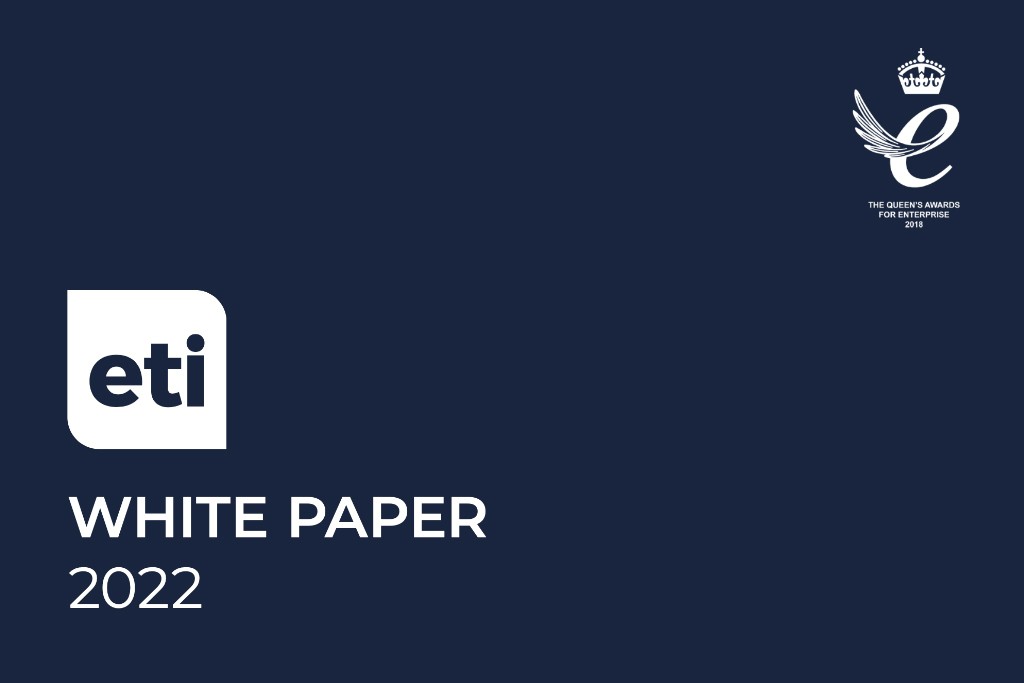
CHAPTER 1
FOOD SAFETY AND WASTE: THE RISK FACTORS
The dual challenges facing the UK – the Covid-19 crisis and the implementation of Brexit – have shed new light on the business and industry catering sector. 2020 saw the sector under threat and mass surplus food go to waste, as much of the industry was forced to shut its doors or put processes on hold. Restaurants and cafés had to establish safe long-term storage of staple foods and appropriate management of potential spoilage. Those businesses who adapted to food delivery had to ensure safety standards as they met increased demand and CO2 shortages. The ‘Eat Out to Help Out’ scheme and delayed transit of food at the Dover border added further challenges.

Even without these challenges, the hospitality and food sectors are discarding more than 1 million tonnes of food each year, wasting the equivalent of around £3.2 billion. Further, growing and transporting food produces huge amounts of greenhouse gases. Stopping waste of food and drink would have the same positive environmental impact as taking 1 in 4 cars off UK roads. Reducing waste will be a core factor in helping businesses and the UK government reach climate targets.
“The rigmarole of transporting food produce over long distances, sometimes overnight, can lead to perishable goods degrading quickly if they are not stored at the right temperatures. Wireless thermometer loggers can track the temperature throughout the delivery process, and this supported many catering companies adapting to this model at the start of the pandemic. Alerts can be sent directly to those responsible should temperatures reach high or low limits, or the refrigeration systems in the delivery vehicle fail. These accurate readings are instantly sent to a host device eliminating human error. This adds a welcome dose of reassurance and confidence.”
Jason Webb Managing Director, Electronic Temperature Instruments

Changes in the way that food is bought, delivered, and consumed have brought certain challenges to light and placed additional pressure on best practice. Over the course of a few weeks, people went from being able to access the food they wanted, whenever they wanted it, to having to endure long queues only to find entire aisles of shelf-staple food had been cleared. Home-delivered groceries and click and collect sky-rocketed to the point that one might have to book a slot weeks in advance. Unsurprisingly, this changed the way many people thought about food with 57 per cent of people reporting last year that they valued food more than they did pre-Covid. Even before the pandemic, a Food Standards Agency (FSA) study showed that 85% of people were aware of the hygiene standards in the places they eat out at or buy food from.
How views are evolving as things return to normal is yet to be seen. This strange period already feels like a lifetime ago. But the pressure to meet exceptional standards is here to stay. Not only do supermarket workers have to ensure that they maintain proper food temperature ranges throughout storage, packing and delivery, but now their own sanitation and personal hygiene is also being placed under scrutiny.
While increased care over food consumption might help to protect against illness, it can also lead to unnecessary waste. Balancing these factors is a fine line to tread both in the industry and for consumers at home.

PREVENTING FOOD WASTE
In terms of managing food waste, prevention is by far the most preferable option. Recycling and recovery of wasted products help to see that production emissions were not completely unnecessary. However, it is in preventing the production and delivery of excess food that the industry has the power to transform things for the better. There are a number of simple actions that those in the food chain can take to prevent excess waste:
1 ⁄ MONITORING
Begin by finding where food is being wasted. Your own part of the supply chain may not be responsible for the greatest amount of food waste but by identifying your own weak links, your company could improve its sustainability and save itself money. Small adjustments, be it how food is stored, better use of cool rooms or changes to menus could make a huge difference.
2 ⁄ CHECK YOUR MACHINES
Tech might be central to most of our processes, but it isn’t perfect. Machinery malfunctions and poor performance is one of the top causes of food waste in the processed and chilled food sectors. Careful attendance to tech can increase the quality and shelf life of foods and prevent the risk of spoilage. Ongoing monitoring and alerts that can warn a colleague as soon as something isn’t quite right can be transformative. For all the time an issue goes unnoticed, it is likely worsening either by producing a product that isn’t up to quality or by allowing food to spoil.
3 ⁄ FOLLOW BEST PRACTICE FOR STORAGE
It is not uncommon for organisations to cut corners or overlook best practice guidelines to save time and cost up front. However, in the long-term, this can cost them far more. Don’t settle for the basic standards when storing or managing food. Look for optimal storage environments to maximise shelf life. Continually rotate so that use is always on a ‘first in, first out’ basis. Utilise cold storage where possible. The FSA offers a comprehensive guide on safe food storage temperatures.
ABOUT ELECTRONIC TEMPERATURE INSTRUMENTS
Electronic Temperature Instruments (ETI) is the UK’s largest digital thermometer manufacturer and exporter of electronic thermometers and temperature probes. A private limited company founded in 1983 by Peter and Miriam Webb, ETI employs over 200 staff across four company owned factories in Worthing, West Sussex. The company has been presented with four Queen’s Awards, most recently in 2018 the Queen’s Award for Enterprise for Innovation.
ETI manufactures 70% of the products it sells and distributes, and it also exports approximately 59% of its annual turnover globally. ETI also supplies thermometers to other industrial sectors including construction, healthcare, scientific laboratories, HVAC and refrigeration.
The Thermapen is ETI’s flagship product and is the UK’s number one selling food thermometer measuring temperature over the range of -49.9 to 299.9 °C. Used by hundreds of thousands of food enthusiasts worldwide, it offers a combination of speed, accuracy and convenience of use.
For more information please visit thermometer.co.uk
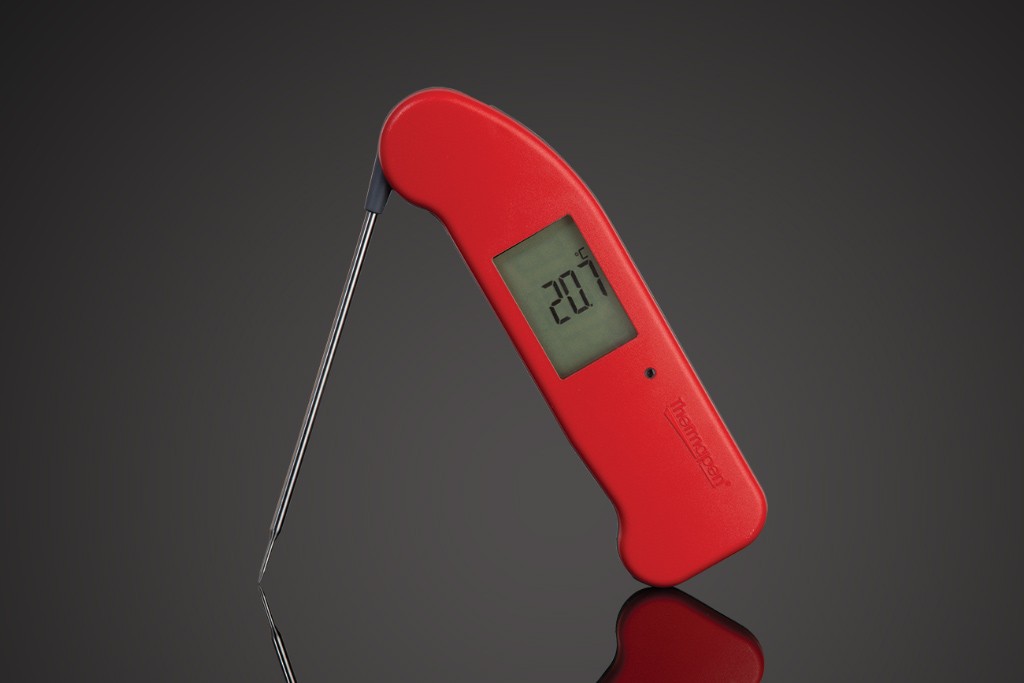
MANAGING STORAGE AND WASTE DURING A PANDEMIC (OR THROUGH ANY TIME OF CHANGE)
Maintaining high quality food and ensuring continual best practice can be challenging at the best of times. However, with thorough training of staff and constant engagement, it can be reliably maintained. But what happens when demand fluctuates, or circumstances become unpredictable. A supermarket might face unprecedented demand for certain products due to an unexpected new health trend. A restaurant might be opening in a new area and have a misestimate of demand. A new food-based app or service might see an entirely new customer base suddenly open up.
Reduced demand is a real challenge that many organisations have been forced to face recently. It is almost unavoidable that perishables will go to waste. If your organisation is able to function at low capacity, altering menus to use more perishables can be a good option. Other products may have to stay in storage much longer than expected. This is where it is crucial to understand and utilise best practice, by ensuring optimal conditions and careful placement and labelling of all products.
Increased demand can be an exciting challenge to meet but companies cannot overlook the risks it poses:
- Increased demand for consumable products will lead to higher turnover, which can reduce the risk of spoilage. However, your business is at risk of overcompensating by over ordering, leaving you with produce that goes to waste.
- If your company is suddenly faced with much larger food orders, it might be necessary to make new storage space. It is understandable to opt for sub-optimal storage of food in the very short-term but invest early in more high-quality storage. Overfilling refrigerators and cool rooms with produce reduces the airflow and leads to hot spots, where bacteria can flourish even if you think you have the right temperature set on the dial. If you can upscale due to this demand, don’t settle for quantity over quality.
- More storage and processing leaves room for more human error. Each time an employee stores or retrieves an item, there is a chance they may make a mistake. A fridge could be left ajar, or a thermostat knocked. Close monitoring, regular checks, and remote real-time monitoring systems can save money in the long-term by avoiding these issues. Some of our own data-loggers, for example, offer real-time monitoring with inbuilt alarms and push notifications straight to a smartphone. Even a manager working remotely or busy elsewhere will see as soon as an issue arises and be able to ensure it is addressed. The more rapidly such problems are managed, the less damage they can cause.
“Food contaminated with food poisoning bacteria may look, smell and taste normal. If food is not stored properly, the bacteria in it can multiply to dangerous levels. Critical temperature control is a key area where catering businesses can increase the life of their products very easily.”
Jason Webb Managing Director, ETI
ETI’s ‘flagship’ product, the Thermapen, has featured on various popular TV programmes and these appearances and celebrity endorsements have introduced the importance of temperature control in both commercial and domestic settings.
The latest Thermapen model, the Thermapen One, achieves temperature readings in just one second and is manufactured and handmade at its headquarters in Worthing, West Sussex. This is where crucial research & development also takes place in the ETI laboratories to continually improve the design of the product.
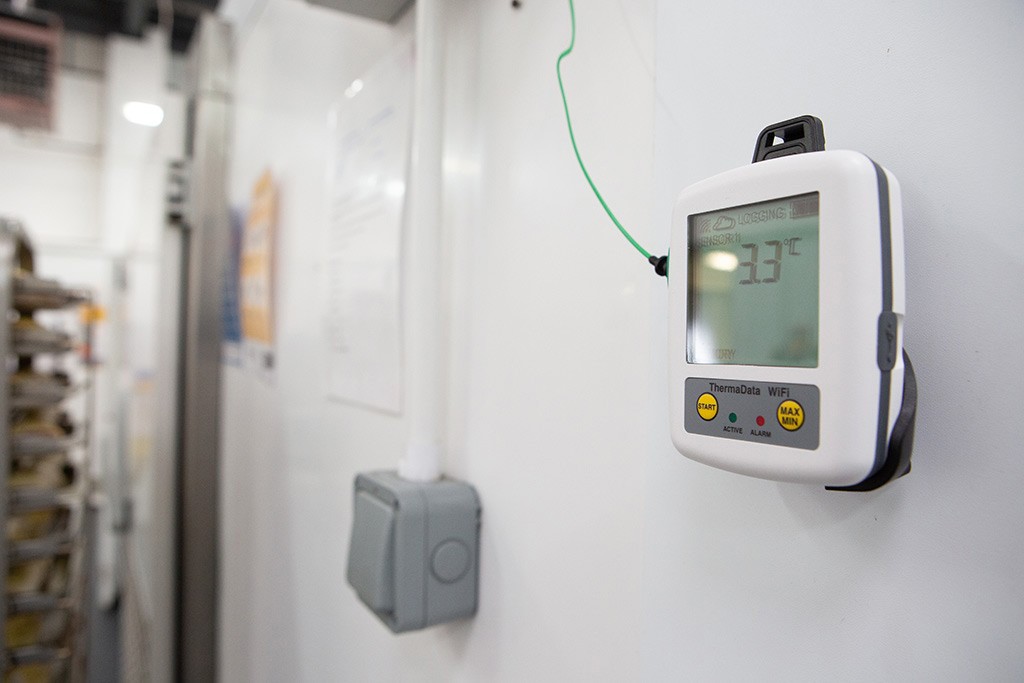
CHAPTER 2
SAVE TIME, SAVE MONEY
Alongside re-openings, workplace training, ever-changing food trends, and economic turbulence, this can all seem a daunting prospect. But some simple processes can be used to ensure peace of mind and save both time and money.
The subject of monitoring is unavoidable when discussing ways to improve management and efficiency in the food and drink industry. We’ve briefly addressed monitoring in various forms in the first chapter of this white paper, but its importance cannot be overstated; no system or process is completely perfect and free from human error.
Compliance checks and regular updates are in place for this very reason. But the time between checks can too easily be wasted. Temperature control is critical, not only in extending produce shelf life but also in keeping it safe to eat. If something isn’t working, for all of the time it goes unnoticed the issue will be exacerbated. However, checking systems too often is a drain on resources, particularly in a busy restaurant or packing area.
Wireless data loggers and Internet of things (IoT) enabled devices are the most efficient and reliable monitoring solutions. These systems will send immediate alerts if any problem arises. These systems also allow constant data collection. This can provide businesses with a fuller view of their temperature systems throughout the day and what factors might lead to fluctuations. They are paperless systems, removing the need for staff members to handle physical records, which can lead to sanitisation issues in times such as this and open the floor to human error.
A business that relies on regular in-person temperature checks may take five different temperature checks three times a day. This equates to approximately 73 hours of labour annually. Based on the UK minimum wage for over 25s, this totals £636 each year. A wireless data logger will be able to provide greater insight for less than £30, saving more than £600 a year depending on the scale of their operation.

FOOD IN TRANSIT
Those working in logistics are similarly under pressure to meet exceptional standards. With demand for home-delivered groceries skyrocketing and recent shortages of dry ice, the cold chain has been under pressure.
Until recently, temperature in transport was checked manually every few hours. A worker would enter the insulated container to carry out checks. In the process, they would let in heat, making temperature maintenance more difficult.
If something went wrong between measurements, a few hours would be more than enough time for food to begin to defrost or spoil. However, measuring more regularly would slow transit, increasing the demand for resources such as dry ice. Remote monitoring has become the norm. The most reliable systems are real-time loggers that can pick up on temperature fluctuations as they happen.
Further care is taken by building redundancy into the system. Using a double sensor system means that if one sensor fails, transit can continue. If the readouts between the two are distinctly different, it is immediately clear that there is an issue.
Supply chains rely on well-managed partnerships and cooperation and vital technology should be accessible throughout the industry. Cost and user-friendly design are important in making this technology widely accessible.
“Supply chains have been working round the clock since the start of the pandemic to assist food and drink service providers, by ensuring their produce meets food safety standards and served at the correct temperature as they enter households. We must take pride in our supply chains who are pulling together behind the scenes to play a central role in ensuring each and every one of us will reach a hint of normality, sooner rather than later.”
Jason Webb Managing Director, ETI
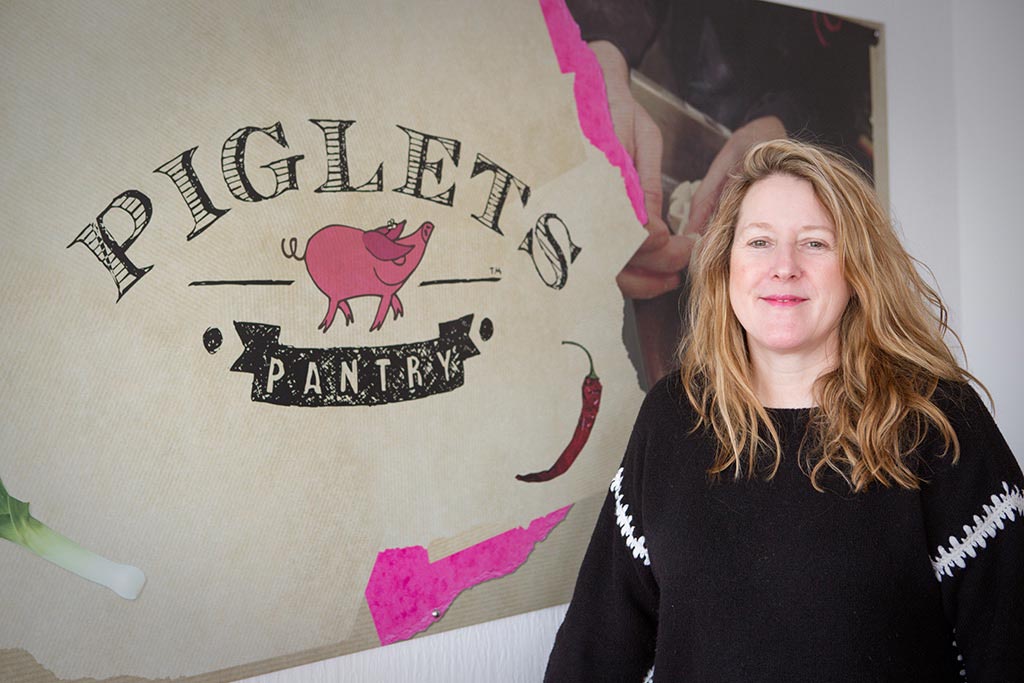
CASE STUDY
Piglet’s Pantry – the proof is in the pie
Piglet’s Pantry began as a small seaside bakery in Worthing, England. Nine years, three buildings and 32 British Pie Awards later, the company now supplies more than 50,000 baked goods per week to sports stadiums, entertainment venues and leading luxury brands nationwide. As a family- run business, it has stayed true to its ethos and prides
itself on sourcing local, sustainable ingredients to produce incredible tasting pies on a robust and efficient production line. One of the key elements of its operation is an Electronic Temperature Instruments temperature system that quality controls its products and increases security while freeing up time that can be best spent growing the business.
The Electronic Temperature Instruments system ensures all Piglet’s Pantry temperature recordings from its fridges and freezers are backed up every few hours, with alerts if the temperatures go above their critical limits. The Electronic Temperature Instruments thermometers at each station are also programmed for all of Piglet’s Pantry active work products, allowing the company to set critical and quality control limits.
However, with Piglet’s Pantry primarily supplying the sports & leisure industry, one of those hit hardest when the first lockdown was announced, the company had to adapt fast after witnessing its entire sales revenue decimate overnight. “Within three days of the first lockdown in 2020, we created an online shop to supply direct to customers who would usually be looking for their pie fix in attendance at sporting events,” says Joanna Hunter, co-founder at Piglet’s Pantry. “Additionally, we have also seen a roaring trade online for our afternoon tea hampers, which we adapted after spotting a gap in the market. Right now, they are outstripping our pie sales.”
The Piglet’s team reached out to the football clubs it would usually supply, including Premier League club Brighton & Hove Albion. “So many clubs rallied around to help promote our website, which resulted in a series of media interviews,” adds Joanna. The launch and promotion created a short-term sales revenue to help see Piglet’s Pantry through what was unprecedented and challenging times.
The success of the company’s online shop also convinced the team to keep it live post-lockdown. Joanna explains: “While this was always part of our expansion plans, we were taken aback by its success. The loss of all of our sales allowed us to concentrate fully on implementing our online store from start to finish. With this short-term plan being implemented so suddenly, we found the issue of not having a packaging solution readily made for our products. This required many hours of research to find the right solution.”
Once the team agreed on the right solution, it was time to turn to testing. To supply perishable goods, Piglet’s would need to test the temperature of its products accurately, ensuring they stay within a safe range overnight via courier service. Joanna concludes:
“Electronic Temperature Instruments supported this process by supplying wireless loggers to track the temperature throughout the delivery process. The results came back with success as the products were still within the temperature range required. Entering new territory, this gave our business confidence that we had found the right packaging solution to send our products nationwide.”
CHAPTER 3
QUALITY ASSURANCE FOR PEACE OF MIND
APPLICATION OF THE HACCP PRINCIPLES
A Hazard Analysis and Critical Control Points (HACCP) plan dictates the care and precautions taken by a company when handling produce. HACCP principles are applied to protect food from biological, physical and chemical hazards by applying controls that prevent direct contamination and cross-contamination:
HACCP PRINCIPLES:
1: Conduct a hazard analysis. Identify potential hazards and where/how they might occur. Hazards can be present throughout the supply chain. Raw animal products such as meat, eggs, fish and shellfish, and especially poultry, can carry pathogens that will grow within certain temperature ranges. Surfaces and equipment in shops and warehouses can be touch-points for contamination.
2: Identify the critical control points. A critical control point (CCP) is a point at which control can be applied to prevent a hazard or reduce it to an acceptable level. What are these points and what action should be taken?
3: Establish critical limits. A critical limit (CL) is the maximum and/or minimum value to which a biological, chemical, or physical parameter must be controlled at a CCP. This is usually a measure such as time, temperature, water activity, pH, or weight. It should be based on scientific literature and/or regulatory standards.
4: Monitor. As with each element of food standards, HACCP principles come back to monitoring. Regular, accurate and reliable checks must be carried out.
5: Establish corrective action. Corrective actions are procedures to be followed when a CL is exceeded. This should include identifying the problem and its cause, addressing the immediate risk and taking care of the underlying issue.
6: Verification. Verification is any action aside from monitoring that determines the validity of the HACCP plan. This might include auditing, reviews, and product testing.
7: Recordkeeping. Long-term quality control necessitates accurate recordkeeping. Records can prove that parameters are kept within CLs, and that monitoring is effective over the long-term.
ACCREDITATION AND QUALITY ASSURANCE
To get the most from your produce, work with suppliers who put quality first. Quality control (QC) is about defect identification and removal. It is a reactive process that ensures standards are met. However, quality assurance (QA) goes beyond this. QA is a proactive process that ensures that development and production processes are of a high standard. QA prevents mistakes from being made in the first place which makes it a crucial part of avoiding waste as well as ensuring excellent products.
Ensuring suppliers use high-quality processes is particularly important in the food industry. They might deliver ingredients that are not defective but have been poorly processed or stored. No matter how well your ingredients are stored, poor storage at the suppliers or in transit will lead to spoilage. Look to build relationships with organisations that align themselves with your own values.
There are various certifications that can demonstrate commitment to quality assurance including ISO 9001 Quality Management System (QMS) and ISO 17025 for temperature and humidity. Gaining certification can be a costly and time-consuming practice so working with an accredited supplier shows the highest quality of food management.
Food management is about continuous, exceptional care and attention to detail. From concept to logistics to sales, every element of the chain has to work in synergy simply to keep consumers safe. The accelerating rate of technological development and falling cost means that the industry is continually innovating and improving. However, it has faced some incredible challenges too. With the climate crisis on the horizon and the government’s promise to reach net zero by 2050, combined with the ongoing complexities of Brexit, the sector is facing a turbulent few years. But effective management of processes and high-quality training and equipment can make all the difference. Smooth and efficient procedures can make the difference between an organisation surviving or crumbling under the pressure.
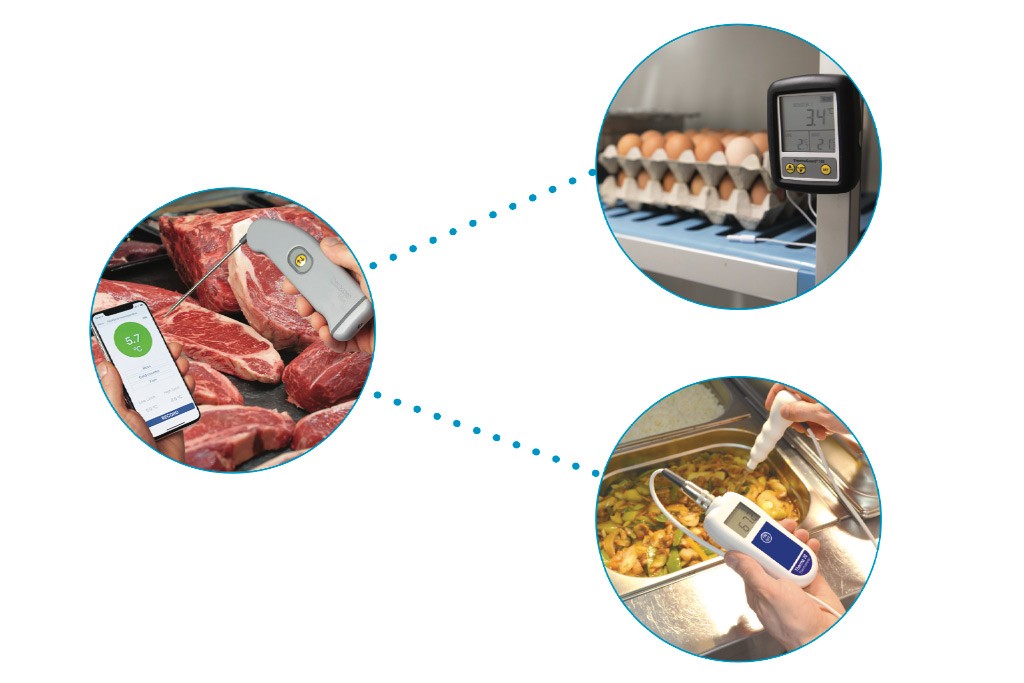
You might also like:
Electronic Temperature Instruments: Our Story So Far
HACCP Checks: Save Over £600 a Year With This Easy Step
A Temperature Guide to the Cook-Chill Process